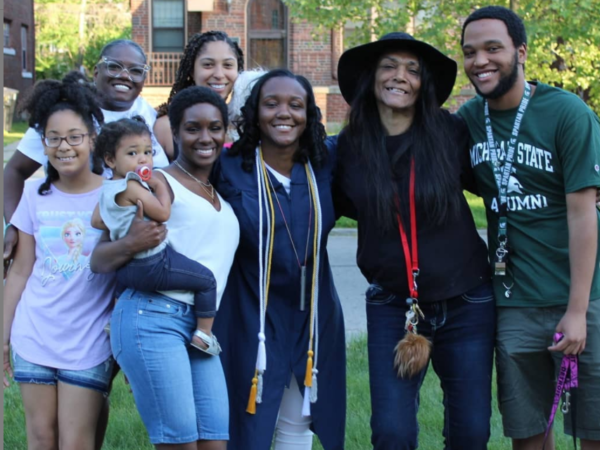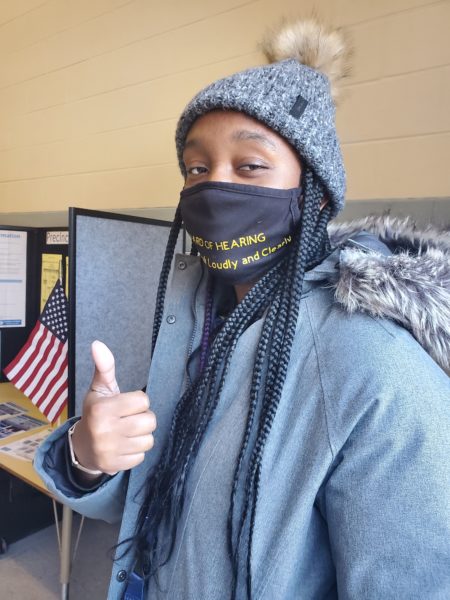Freshman college student Peninnah supports the hard of hearing community during COVID-19 by creating masks and sharing tips to help communicate better.
Peninnah grew up with hearing loss and wearing hearing aids. Then at volleyball practice one day she had a seizure and suddenly lost most of her hearing in her left ear. It was shortly after that Peninnah received her first Cochlear™ Nucleus® 5 Sound Processor and gained back access to the sounds she was missing. She later upgraded to the Nucleus 7 Sound Processor.
“I love the Nucleus 7 Sound Processor. I started college this year at University of Michigan Stamps School of Art and Design. The Nucleus 7 Sound Processor has features that enable me to hear better throughout my day, especially in noisy situations. It blocks out the background noise so I can hear the person and conversation I want to hear. I also love the direct connectivity. I can stream phone conversations and music directly to my sound processor. This is really helpful in coffee shops and downtown.”
Growing up with a hearing loss, Peninnah often persevered through challenges. But when COVID-19 hit, Peninnah quickly realized how hard it was to communicate wearing a mask as a hard of hearing person. That’s when she came up with the idea to create face masks that let people know they are communicating with someone who is hard of hearing and to please speak loudly and clearly1. “These masks are great because they clearly communicate to the person you are speaking to that you are hard of hearing and the conversation may require some additional effort.” She shared these masks with her social media community and the requests for them came in from other deaf and hard of hearing friends.
In addition to these great masks, Peninnah shared these tips for communicating with a face mask.
- Speak loud and clear – The mask will muffle sounds, so it is helpful to ask the person you are speaking with to be mindful to speak loud (not shouting), clear and more slowly.
- Move to a location with less background noise – When you do not have visual cues to help you communicate with someone wearing a mask, less background noise is better.
- Find an alternative way to communicate – You may need to ask the speaker to write it down or send a text.
- Be patient – Wearing masks is likely a temporary situation. While understanding speakers is difficult, remember we will all get through this together.
As a college student, Peninnah is grateful for the opportunity to continue her education and help others communicate during these difficult times.
For additional communication resources, visit The Communication Corner.
- Masks are not manufactured or sold by Cochlear. Masks are intended for general, non-medical purposes, not intended for use by health care professionals and not intended for use in a health care facility or environment.


